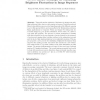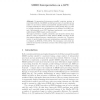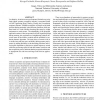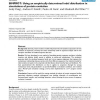2455 search results - page 96 / 491 » Computability of Models for Sequence Assembly |
RECOMB
2003
Springer
14 years 9 months ago
2003
Springer
Protein sequence alignments are more reliable the shorter the evolutionary distance. Here, we align distantly related proteins using many closely spaced intermediate sequences as ...
ECCV
2004
Springer
14 years 2 months ago
2004
Springer
Abstract. Temporal random variation of luminance in images can manifest in film and video due to a wide variety of sources. Typical in archived films, it also affects scenes rec...
LCPC
2009
Springer
14 years 1 months ago
2009
Springer
Programming heterogeneous parallel computer systems is notoriously difficult, but MIMD models have proven to be portable across multi-core processors, clusters, and massively paral...
WIAMIS
2009
IEEE
14 years 3 months ago
2009
IEEE
An adaptive, invariant to user performance fluctuation or noisy input signal, gesture recognition scheme is presented based on Self Organizing Maps, Markov Models and Levenshtein...
BMCBI
2005
13 years 8 months ago
2005
Background: General protein evolution models help determine the baseline expectations for the evolution of sequences, and they have been extensively useful in sequence analysis an...




